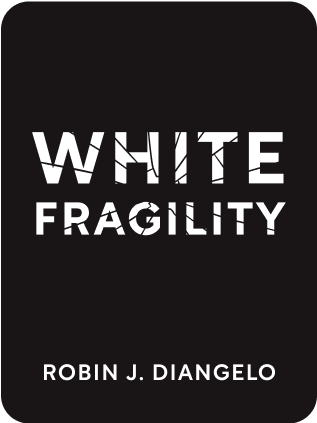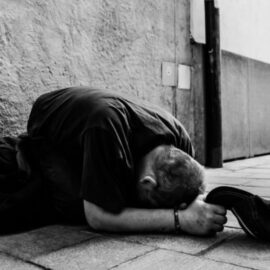

This article is an excerpt from the Shortform summary of "White Fragility" by Robin J. DiAngelo. Shortform has the world's best summaries of books you should be reading.
Like this article? Sign up for a free trial here .
What are the key concepts in the book White Fragility? Do you need a White Fragility study guide to help you understand these concepts and ideas?
White Fragility is a book by Robin DiAngelo, an anti-racism educator. This White Fragility reading guide explores the phenomenon of white fragility and what causes it.
Keep reading for a White Fragility study guide to help you understand the main concepts of the book.
White Fragility Study Guide Overview
In White Fragility: Why It’s So Hard for White People to Talk About Racism, author and anti-racist educator Robin DiAngelo explores white fragility—the phenomenon by which white people become angry, defensive, or hostile when confronted with the idea that they are complicit in systemic racism. As a white woman herself, DiAngelo documents the ways in which white Americans are unable to emotionally withstand even minor amounts of racially triggered stress and retreat into a defensive posture when forced to discuss racism.
White Fragility is written for white people who consider themselves to be liberal or progressive on racial matters. Like all white people, white progressives are raised in a society that is institutionally racist. By this, we mean a society in which all key political, economic, social, and cultural institutions are overwhelmingly controlled by white people. This disproportionate share of power is the product of centuries of history during which people of color (especially black people) were systematically enslaved, expropriated, disenfranchised, segregated, and marginalized. As a result, white control of society became the “normal” or “standard” state of affairs. You can use this White Fragility study guide to help you understand what happens and what you can do.
Causes of White Fragility
This White Fragility reading guide identifies individualism as a key force behind white fragility. The belief in individualism is a central part of American ideology. It is the belief that individuals have full agency to shape the outcomes in their lives. According to individualism, no one faces any barriers on the way to achievement that are not of their own making.
Individualism is a comforting and validating belief—for white people, who sit atop the nation’s economic and political power structures. It tells them that their success and advantages in life are entirely the result of their own hard work, intelligence, and initiative.
But individualism sends a very different message to people of color. If powerful and successful people are powerful and successful because of their own merits as individuals, then it can only follow that powerless and unsuccessful people are in that condition because they are somehow “lesser” individuals. By its very nature, a belief in individualism renders one incapable of acknowledging the structural power disparities within society that lead to inequitable outcomes for different groups.
White beliefs in objectivity are closely related to the myth of individualism, according to this White Fragility reading guide. Because white people believe that they are unique individuals unshaped by history or society, they also come to believe that their views of the world are entirely objective. If you don’t believe you’re conditioned by society or any other external forces, you can’t accept the reality of your own biases.
Being asked to confront one’s actions and beliefs as racist can be deeply upsetting to white people, because it punctures their myth of objectivity. It suggests that one does not have complete autonomy over how one thinks and acts—but, rather, that one ventures out into the world profoundly shaped by forces beyond one’s control.
What White Fragility Looks Like
Colorblindness enabled white Americans to delude themselves into believing that they could avoid problems of race by simply pretending that they didn’t exist.
And even if it were possible, colorblindness would not be a desirable goal, because the experiences of people of color are inevitably defined by race. To deny the existence of race or to minimize its importance is to deny the existence of racism itself—and thus give implicit assent to it. By refusing to acknowledge a person of color’s racial identity and claiming that “you don’t see color,” you as a white person are denying the often-painful reality of their lived experiences, absurdly and offensively equating them with your own, and ignoring the existence of racism as a historical and structural phenomenon, as well as a daily one for people of color.
This professed belief in colorblindness is also a great trigger of white fragility. A white person who professes to not see race unsurprisingly becomes defensive and agitated when the realities of institutional racism—and their responsibility for it as a beneficiary of it—are explained to them. They may even double down on their commitment to colorblindness, claiming that by bringing the discussion back to race, you are the one engaging in racism.
The myth of colorblindness is actively harmful. It lets white people off the hook for their complicity in sustaining the institutional and ideological underpinnings of white supremacy by narrowly defining racism and reducing it to a matter of individual choice.
Sheltered Experiences
Because these desegregation efforts largely failed in the face of white resistance, most white people today live in segregated worlds where they seldom interact with people of color. Yet white people frequently invoke this fact of their upbringing as a way of absolving themselves of any complicity in supporting a racist society. For them, it is a get-out-of-jail-free card. They cannot be racist, they argue, because they grew up in a “sheltered” all-white community.
In this telling, this White Fragility study guide points out that the absence of racial diversity is meant to signify an absence of racism. Of course, the opposite is true—“sheltered,” all-white communities are, by their very existence, products of institutional racism. Living in such a place would amplify one’s racist conditioning by making one more likely to form ideas about black people from stereotypes and media misrepresentations rather than from genuine interactions. Even describing such an upbringing as “sheltered” is suffused with racial hostility, as it implies that one was “sheltered” from the dangerous presence of people of color.
A Mechanism of Control
But this White Fragility study guide notes that we should not make the mistake of characterizing white fragility as merely a defensive mechanism. Rather, white fragility is a powerful means of reinforcing white supremacy and shutting down any challenges to it by people of color.
By casting the white person in the discussion as the victim, white fragility enables white people to command social resources of time and attention. For example, a white woman brought to tears after being forced to confront her complicity in systemic racism might compel other people (even people of color) to comfort and reassure her that she isn’t racist.
Or, a white man who reacts angrily and defensively in the same situation will similarly refocus the attention on his angry and bombastic reaction. These tactics draw attention away from the discussion of systemic racism, shut down potential challenges to it, and make white concerns and white anxieties the focus.
White Fragility Study Guide: Taking Action
The work of recognizing and shedding (as much as possible) one’s racist conditioning as a white person can be extremely difficult. But it is important to do if you’re serious about your professed opposition to racism. You cannot tackle systemic racism if you cannot identify and come to terms with the ways in which you unfairly benefit from and perpetuate it.
Because racism is a structural phenomenon and not an individual character trait, there is no need to get defensive when one’s own racially problematic behavior is brought to light. Moreover, because of your dominant position within the racial hierarchy, the feedback you are receiving poses no threat to you. If you do feel threatened, you must work on fortifying your own racial stamina.
Instead of retreating into fragility, look at the feedback, especially when it comes from a person of color, as an opportunity to learn and grow. Your response shouldn’t be, “How dare you!” It should instead be, “Thank you.” Hopefully, this White Fragility study guide has equipped you to combat the phenomenon of white fragility.

———End of Preview———
Like what you just read? Read the rest of the world's best summary of Robin J. DiAngelo's "White Fragility" at Shortform .
Here's what you'll find in our full White Fragility summary :
- Why white people become defensive when confronted with the idea of racism
- How today's racial hiearchy began in roots centuries ago
- How we as society can gradually overcome our deep racial divides





